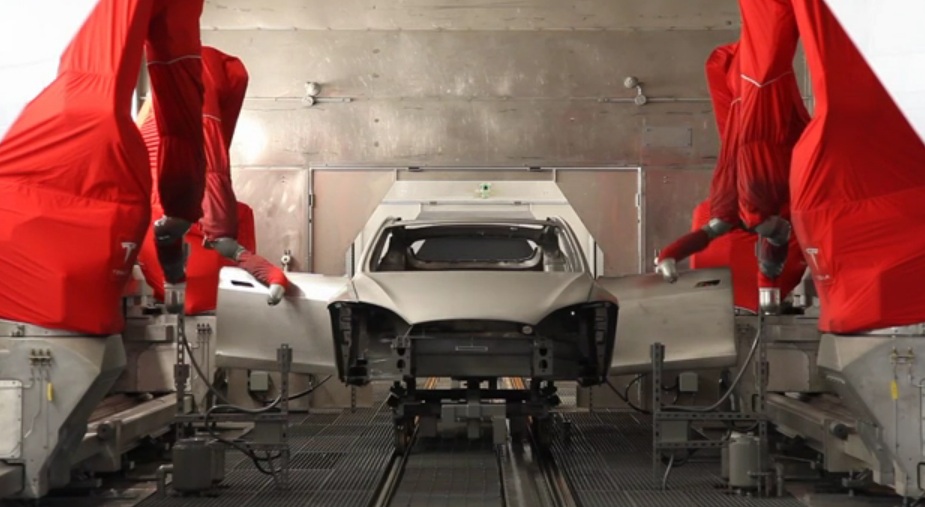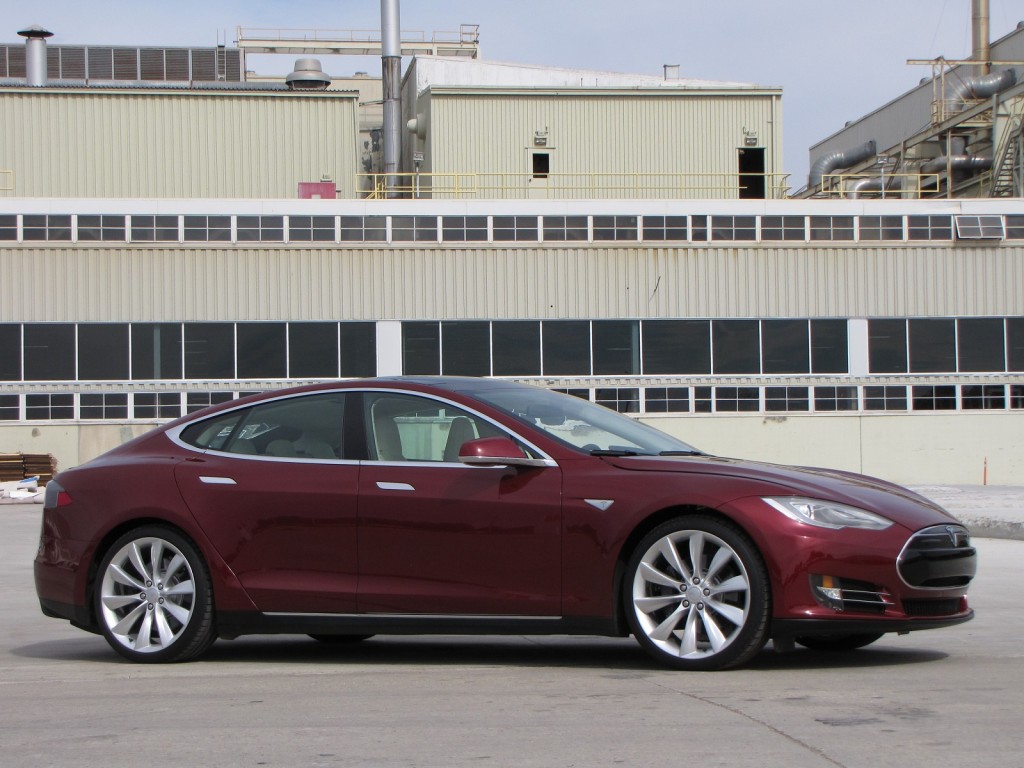The 2012 Tesla Model S has launched, short drive reviews are coming in, and new owners are taking delivery every day. So what's next for Tesla?
We know what the company plans to launch for its future vehicles--the 2014 Model X crossover, a Roadster replacement, and down the road, a smaller, less expensive third model range.
But to get there, Tesla has to sell enough Model S cars to keep itself in business and generate the cash to fund those ambitious plans.
So how many Model S cars can Tesla sell?
20,000 next year?
CEO Elon Musk has said confidently, several times, that Tesla Motors [NSDQ:TSLA] will deliver 5,000 Model S cars during the balance of 2012, and as many as 20,000 in 2013.
Musk is, in fact, "highly confident" that the company will make those numbers, and turn a profit to boot next year.
And the year after, he expects the plant to build up to 30,000 electric cars, both the Model S and Model X.
Assuming a smooth production ramp-up without significant quality issues--not an automatic assumption, as Fisker can attest--the 2012 figure works out to about 800 cars a month, or 40 cars a day, five per hour, using a 20-day single-shift production month.
10,000 deposits already
And Tesla says it has more than 10,000 (refundable) deposits in hand for the Model S. So that's plausible even if only half the reservations turn into purchases; that rate may be higher.
![2012 Tesla Model S display screen [Photo: Flickr user jurvetson] 2012 Tesla Model S display screen [Photo: Flickr user jurvetson]](https://images.hgmsites.net/lrg/2012-tesla-model-s-display-screen-photo-flickr-user-jurvetson_100393720_l.jpg)
2012 Tesla Model S display screen [Photo: Flickr user jurvetson]
But 2013 could be more of a challenge. IHS Automotive analyst Rebecca Lindland, for one, is skeptical that Tesla can move that many Model S cars in the current stage of electric-car market.
Her colleague Aaron Bragman was pithier yet, calling the company's plans to sell 30,000 cars a year "folly" in a March interview.
One challenge may be simple distribution; the company now has 14 U.S. stores, versus 15 times that number for Japanese luxury brand Lexus.
Non-U.S. sales
On the other hand, next year's 20,000 goal likely includes at least some deliveries to European and perhaps Asian customers as well. Tesla is surely hard at work getting the Model S certified for sale in European Union countries and other markets.
Tesla is still selling 2012 Roadsters in Europe and Asia, but not in the U.S. It is not legally allowed to sell new Roadsters made after Dec 31, 2011, in the U.S. because the car's passenger-airbag exemption expired.
2012 Tesla Model S Signature
Those non-European sales could end up being as much as 40 percent of the total of 2,600 Roadsters the company contracted with Lotus to build.
(In their comments, neither IHS Automotive analyst broke out domestic versus export sales.)
But let's say that, of that 20,000 Model S deliveries next year, fully 8,000 are sold outside the U.S. Achieving that total will depend on how quickly the company can get the Model S certified for sale in new markets.
How big is the market?
That still leaves Tesla to sell 1,000 cars per month here in the States--or more than last year's sales of the Nissan Leaf or the Chevrolet Volt.
Analysts generally expect 35,000 to 45,000 plug-in cars of all types to be sold in the U.S. this year.

2012 Tesla Model S painting process
But that 2012 sales total includes such cars as the Toyota Prius Plug-in Hybrid, which isn't likely to compete directly with a 265-mile all-electric luxury sedan (or its lower-range brethren, when they hit the market).
And next year's total will include sales of Ford's two 2013 Energi plug-in hybrids as well--assuming they are launched on schedule later this year.
Competitors unclear
It's that 2013 plug-in sales number that's the big question mark. There will be far more plug-in cars on sale by then, but many will be only low-volume compliance cars sold in just a few markets.
Another open question is the competitive set for the Model S.
In his March interview, Bragman notes that annual sales of such luxury entries as the BMW 7-Series (11,299), the Mercedes-Benz S-Class (12,258), and even such high-performance models as the Porsche Panamera (6,879) form a very small segment--as do plug-in cars in general (less than 18,000 last year).
He points out as well that Tesla is a new and mostly unknown car brand with very few sales outlets indeed in, so far, just a handful of states.

2012 Tesla Model S beta vehicle, Fremont, CA, October 2011
He feels it would be a tall order for Tesla to sell as many cars in the U.S. next year as BMW or Mercedes-Benz do in the large luxury segment with far, far more dealers.
Add to that the fact that Tesla is selling all-electric cars, and Bragman remains unconvinced that even as many as 12,000 U.S. sales of the Model S next year are achievable.
Will Tesla say how many it sells?
We look forward to checking back with industry analysts this fall, once Tesla has racked up a few months of deliveries.
Assuming, that is, that Tesla Motors starts behaving like a real car company and reporting monthly U.S. new-car sales.
Thus far, the company has declined to do so for its Roadster sales, reporting only sales by quarter buried in disclosure documents it files with the U.S. Securities & Exchange Commission.
One indicator of Tesla's success in selling Model S cars that bears watching is how quickly the company announces availability of the low-end 40-kWh model, priced at $57,400 before incentives.
If that happens as soon as January, it may mean high-end orders aren't exactly flooding in. But if those cars don't emerge until perhaps July, that may be more encouraging for Model S prospects.
Give us your thoughts
How do you view the sales prospects for the Tesla Model S? And how many cars do you think the company will deliver--in the U.S. and globally--next year?
Leave us your thoughts in the Comments below.
We encourage reasoned, market-based analysis over blatant "Tesla rocks and will rule the world!!" or "Tesla has no hope and will fail" statements.
+++++++++++













